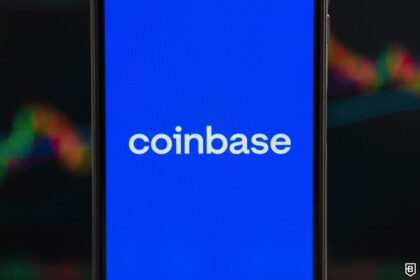Join Our Telegram channel to stay up to date on breaking news coverage
When it comes to hardware wallets, D’Cent and Trezor are two of the most popular options, but they serve different types of users.
D’Cent focuses on mobile access and modern UX, while Trezor emphasizes open-source security and long-term reliability.
Below, we’ll break down the strengths of each wallet, how they compare head-to-head, and help you decide which one may suit your use cases best.
D’Cent Wallet vs Trezor – Quick Comparison
Both wallets protect your crypto offline, but they take different approaches. D’Cent focuses on mobile-first convenience with built-in features like NFT viewing and token swapping.
Trezor prioritizes transparency and security fundamentals with its open-source design and desktop-focused ecosystem.
| Feature | D’Cent Wallet | Trezor |
|---|---|---|
| Type | Hardware wallet with mobile app | Hardware wallet with desktop interface |
| Supported Blockchains | 40+ chains including Bitcoin, Ethereum, Solana | 9,000+ coins across major chains (no Solana) |
| Security | Secure element chip, biometric authentication | Open-source firmware, passphrase protection |
| Custody | Non-custodial | Non-custodial |
| Hardware Required? | Yes (device needed for transactions) | Yes (device needed for transactions) |
| NFT Support | Yes, viewable on device | Limited (through third-party apps) |
| Token Swapping | Built-in via partnerships | Through third-party integrations |
| Staking | Native support for multiple chains | Limited native support |
| Open Source | No (closed-source firmware) | Yes (fully open-source) |
| Beginner Friendly? | Very (guided setup, intuitive app) | Moderate (more technical setup) |
| Backup & Recovery | 24-word seed phrase | 12/24-word seed phrase + optional passphrase |
| Cost | $119-$159 | $69-$219 |
D’Cent vs Trezor: Key Feature Differences
Now, we’ll go over every important aspect a cold wallet should have, and compare D’Cent and Trezor head-to-head.
Security
D’Cent uses a secure element chip (the same technology in credit cards) paired with biometric authentication on their touch models. The downside is that their firmware stays closed-source, so you trust D’Cent’s security claims without independent verification.
Trezor takes the opposite approach. Everything about their wallets is open-source, from the hardware design to the firmware code. Security researchers worldwide can inspect and verify their claims.
Instead of biometrics, Trezor uses PIN codes and optional passphrases for protection. This transparency appeals to crypto purists but requires more technical knowledge to fully appreciate.
Device Experience & Connectivity
Using these wallets feels a bit different. D’Cent connects via Bluetooth to your phone, so transactions feel as simple as using a banking app. The touchscreen responds like a tiny smartphone, and you can check your portfolio without connecting to a computer.
Trezor sticks to USB connections and physical buttons. You plug it into your computer, open Trezor Suite, and confirm transactions by pressing buttons on the device. The Model T has a touchscreen, but it still requires that USB cable.
The wired approach may be less convenient but it gives you better protection against Bluetooth hacking attacks.
Supported Coins and Ecosystem
Trezor supports over 9,000 different cryptocurrencies across major blockchains like Bitcoin, Ethereum, and Cardano. If a coin exists and has decent adoption, Trezor probably supports it. The only downside is that it has no support for Solana, nor other projects built on that chain.
D’Cent supports fewer coins in general, but covers all of the blue-chip cryptos. You get Bitcoin and Ethereum like with Trezor, but also Solana, Klaytn, and other newer chains. They actively add trending tokens and chains based on user demand. For most users, D’Cent’s 40+ supported chains cover everything they need.
NFT Support
D’Cent treats NFTs as first-class citizens. You can view your NFT collection directly on the device’s screen, manage them through the app, and sign NFT transactions without jumping through hoops. The experience feels native and intentional.
On the other hand, Trezor barely acknowledges NFTs exist. You can technically manage them through third-party interfaces like MetaMask, but the device itself won’t display them.
If NFTs matter to your crypto strategy, D’Cent tech might be a better option for you.
Staking
With D’Cent, you can stake popular coins like Cardano, Polkadot, and Cosmos directly through their app. The interface shows your rewards clearly and handles the technical complexity behind the scenes.
Trezor staking options are fairly limited. You can stake some coins through Trezor Suite, but the selection is limited compared to D’Cents ecosystem. Most Trezor users who want to stake end up using third-party services, which adds complexity and potential security risks.
Mobile vs Desktop Use
D’Cent built their entire experience around smartphones. Their mobile app serves as your primary interface, with the hardware wallet acting as a secure signing device.
You can check balances, swap tokens, and manage your entire portfolio from your phone. Desktop users can access a web interface, but it feels like an afterthought.
Trezor focuses on desktop users first. Trezor Suite provides a comprehensive desktop application for Windows, Mac, and Linux.
Their mobile app exists but offers limited functionality compared to the desktop version. If you prefer managing crypto from your computer, Trezor provides a better experience.
Recovery and Backup Methods
Both wallets use seed phrases for recovery, but the implementation differs. D’Cent generates a 24-word recovery phrase during setup. Write it down, store it safely, and you can recover your wallet if the device breaks or gets lost. They also offer an optional recovery key feature that creates an encrypted backup.
Trezor lets you choose between 12 or 24-word seed phrases, then adds optional passphrase protection on top. This passphrase acts as a “25th word” that creates hidden wallets.
Even if someone finds your seed phrase, they can’t access passphrase-protected accounts. Power users love this feature, but it can be confusing for beginners, who can easily lock themselves out.
Cost
D’Cent Wallet:
- Basic model: $119
- Biometric model: $159
- Pricing stays consistent, rarely goes on sale
Trezor:
- Model One: $69
- Model T: $219
- Occasional sales and discounts available
What’s It Like to Use Each Wallet?
Setting up the D’Cent wallet is quick and beginner-friendly. The process takes about 10 minutes, and their app guides through each step with clear instructions. Firmware updates are handled automatically when the device connects, so there’s little to worry about on the maintenance side.
Day-to-day use is smooth overall, though a few users have mentioned occasional Bluetooth hiccups that require restarting the app.
Trezor, on the other hand, has a steeper learning curve. You’ll need to install the Trezor Suite desktop app, connect the device, and go through more technical setup steps.
Firmware updates must be approved manually, which does add an additional layer of security, but also brings more complexity with it. Once everything is up and running, though, the experience is rock solid. The software is stable, and the wired connection is reliable with no random disconnects.
Who’s It Best For – D’Cent vs Trezor
Choose D’Cent if you mostly use your phone to manage crypto, care about NFT support, or just want a straightforward setup.
It’s ideal for mobile-first users, NFT collectors, and anyone who prioritizes ease of use over ultra-tight security. The intuitive app and built-in convenience make it a great everyday option.
Trezor, on the other hand, is a better fit if your top priority is security. It’s built for users who prefer desktop tools, want full control over their setup, or need access to a wide range of supported coins.
Privacy advocates and security-conscious investors often lean toward Trezor for its open-source firmware and long-standing reputation – it was, after all, the first-ever hardware wallet.
Final Thoughts
Both D’Cent and Trezor do what they’re meant to – keep your crypto safe offline. Neither has experienced a major security breach, and both brands continue to actively support and improve their products.
The right choice depends on what you value most. D’Cent gives you a sleek, mobile-friendly experience that lowers the barrier to using a hardware wallet.
Trezor leans into transparency and long-proven security, which is perfect for users who want full control and peace of mind with larger holdings.
You really can’t go wrong with either one. Just choose the wallet that fits how you actually use crypto, not how you think you’re supposed to. Your future self will thank you for finally getting your assets off that exchange.
Join Our Telegram channel to stay up to date on breaking news coverage









